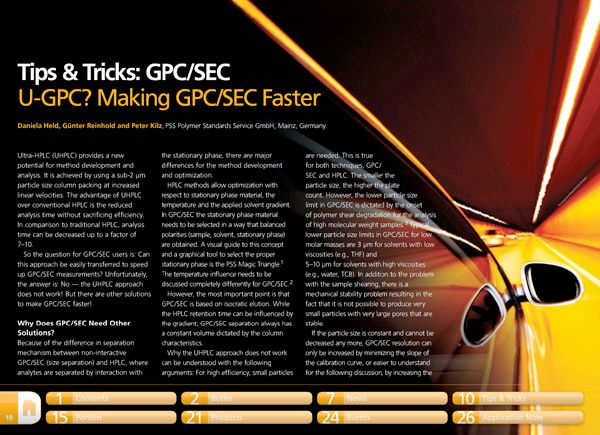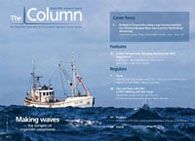U-GPC? Making GPC/SEC Faster
Can a UHPLC approach be easily transferred to speed up GPC/SEC measurements? Unfortunately, the answer is: No! But there are other solutions to make GPC/SEC faster
Ultra-HPLC (UHPLC) provides a new potential for method development and analysis. It is achieved by using a sub-2 µm particle size column packing at increased linear velocities. The advantage of UHPLC over conventional HPLC is the reduced analysis time without sacrificing efficiency. In comparison to traditional HPLC, analysis time can be decreased up to a factor of 7–10.
So the question for GPC/SEC users is: Can this approach be easily transferred to speed up GPC/SEC measurements? Unfortunately, the answer is: No - the UHPLC approach does not work! But there are other solutions to make GPC/SEC faster!
Polysorbate Quantification and Degradation Analysis via LC and Charged Aerosol Detection
April 9th 2025Scientists from ThermoFisher Scientific published a review article in the Journal of Chromatography A that provided an overview of HPLC analysis using charged aerosol detection can help with polysorbate quantification.
Analyzing Vitamin K1 Levels in Vegetables Eaten by Warfarin Patients Using HPLC UV–vis
April 9th 2025Research conducted by the Universitas Padjadjaran (Sumedang, Indonesia) focused on the measurement of vitamin K1 in various vegetables (specifically lettuce, cabbage, napa cabbage, and spinach) that were ingested by patients using warfarin. High performance liquid chromatography (HPLC) equipped with an ultraviolet detector set at 245 nm was used as the analytical technique.
Removing Double-Stranded RNA Impurities Using Chromatography
April 8th 2025Researchers from Agency for Science, Technology and Research in Singapore recently published a review article exploring how chromatography can be used to remove double-stranded RNA impurities during mRNA therapeutics production.










